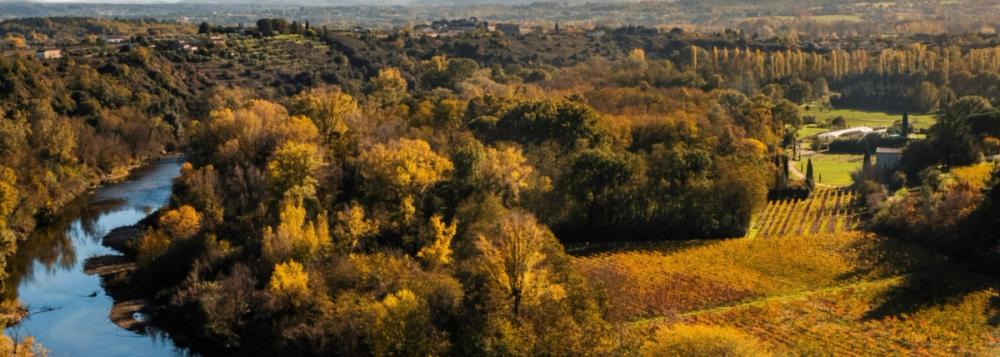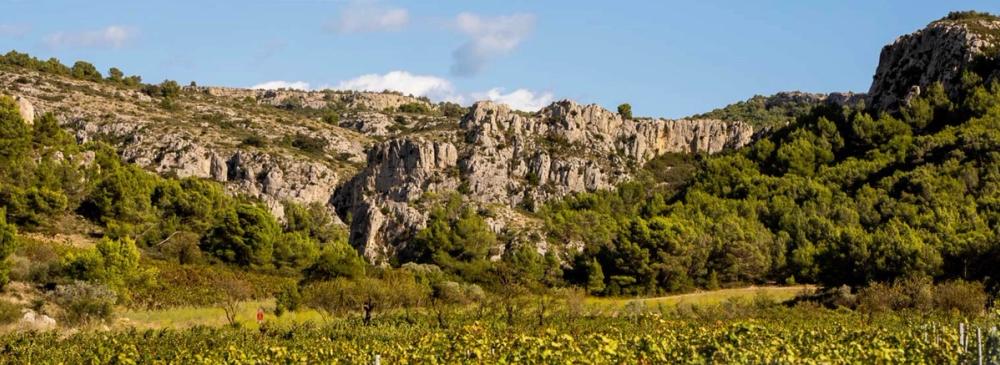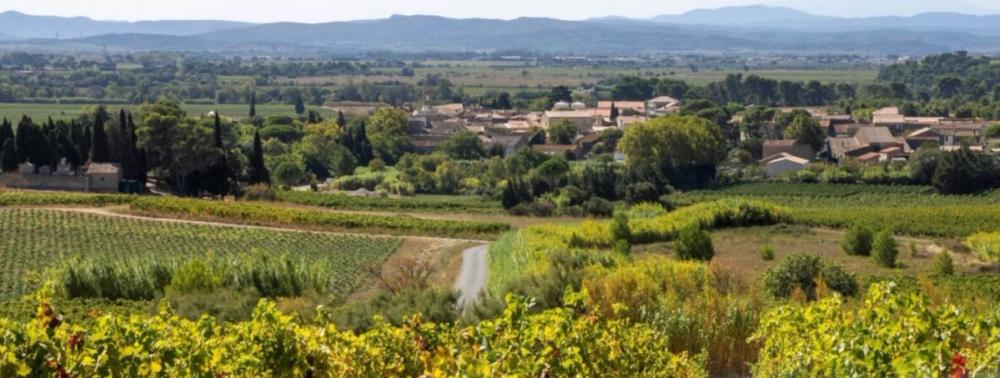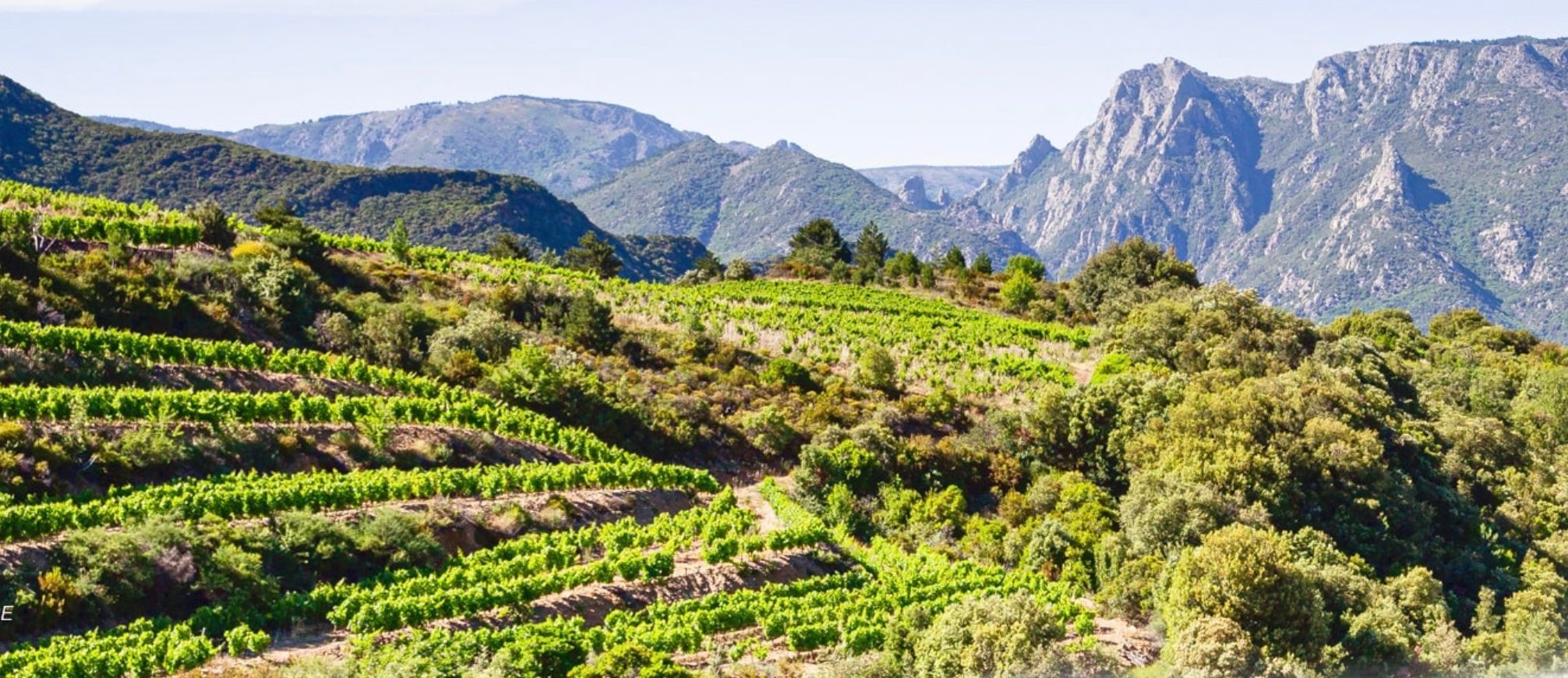Anyone approaching the Languedoc is presented with an immediate challenge – where to begin? This is a region where the statistics begin to add up. There are more than 20 Appellations d’Origine Protégée (AOPs) and over 12 Indications Géographique Protégées (GIs). The whole region spans four French départments – the Aude, Hérault and (to a lesser extent) the Gard and Pyrénées Orientales.
The Languedoc has around 1,200 independent wineries, 550 co-operatives and 150 companies trading in finished wine. The AOPs alone cover over 35,000 hectares and produced 1.1 million hectolitres of wine in 2020. There are well over 30 different varieties grown across the region, used to make the gamut of red, white, rosé, sparkling and dessert wines.
These are planted across a myriad of soil types ranging from sandstone to basalt with several soils often found in one area – for example, Saint-Chinian’s terroir is split between limestone and schist. And there are multiple, usually competing climatic influences too.
To best understand the Languedoc, one needs to step back and think logically. Several years ago, Chile set out to explain the influences on its terroirs by splitting the country lengthways into three strips: coastal, central and mountain.

The Cevennes marks one end of the Languedoc wine region
Occupying a strip between the mountains of the Cevennes at the southern end of the Massif Central, and the Mediterranean, the Languedoc is not dissimilar.
The Wines of Languedoc trade body has broken the region down into three helpful morsels. Let’s take a look at them.
The Coastal Plains
One of the Languedoc’s defining features is its long Mediterranean coastline, dotted with beaches and lagoons. Here the cool breezes, laden with sea spray, give a chilly edge to the long summer evenings. This ‘Neptune effect’ gives the wines freshness, aroma and structure. The soils also tend to be a mix of sedimentary types which emphasises these features.
La Clape is largely limestone, Grés de Montpellier is sandstone (‘grés’ means sandstone in French), while Picpoul de Pinet has limestone in its hilly ‘piochs’ and alluvial soils in the low-lying ‘marins’.

La Clape and its distinctive limestone rocks
Although plenty of reds and rosés are made along these shores, this is perfect territory for white wines. Aromatic Muscats, zippy Picpoul and unctuous but fresh Bourboulenc thrive in these maritime conditions, and it’s no surprise that several wines from these areas have become some of the Languedoc’s most popular exports.
Hills and Mountains
Turning one’s back to the sea, the backdrop of the distant Cevennes rises before you. This range runs the length of the region. Among its rolling foothills and plateaus is the Languedoc’s wild interior. It is a more extreme climate than many associate with the bucolic French south, hot and dry in summer, cold in winter and buffeted all year long by several of the region’s tempestuous winds, which clash where they meet along the boundaries of the Aude and Hérault.
The soils here are varied but heavily influenced by the Massif Central’s primordial volcanic past. As such, one finds limestone in Pic Saint Loup, iron-rich sandstone ‘ruffes’ in Terrasses du Larzac, and schist in Faugères and part of Saint-Chinian.
Some of the Languedoc’s most famous appellations are here, and it is the chief area of production for the region’s renowned red wines – not that the whites and rosés produced here should be overlooked.
The Atlantic Corridor
In the west of the Languedoc, there is the Atlantic Corridor. Although the Mediterranean exerts the greatest influence over the region, in the far west a gap between the Cevennes and the Pyrenees provides a corridor down which the cooling influence of the Atlantic can still be felt.
This has a profound effect on the region and what grows there. For example, different types of oak trees grow depending on which maritime influence is predominant. Holm oaks grow in more Mediterranean climates for example, and downy oaks in Atlantic ones. There are also areas where the two can grow side-by-side.
Observing the preferred habitats of the local flora, winemakers have been able to plant grape varieties in more suitable areas. This is important because, unlike other AOPs in Languedoc, those in the West use many Atlantic grape varieties.

Limoux has emerged as one of the Languedoc's key sparkling wine areas
Limoux for example uses Chardonnay and Chenin Blanc in its sparkling wines and Merlot and Pinot Noir in many of its reds. Meanwhile, Cabardès and Malepère make extensive use of Cabernet Sauvignon, Cabernet Franc, Merlot, Malbec and Côt alongside Syrah and Grenache in their reds.
It’s yet another example of how winemakers use their instincts and local knowledge to make the most of their surroundings.
The winds
Finally, we cannot leave this section on the climatic influences of the Languedoc without mentioning one other crucial factor – the winds.
These sweep down from the mountains and valleys and across the seas, adding to the Languedoc’s wild and rugged aspect. The locals will tell you this is ‘le pays du vent’, ‘the land of winds’. In all likelihood, it is one of the windiest parts of France.
There are winds that bring the rains, the clouds, that blow the clouds away, that can be hot, dry, or cool. There’s even said to be a specific local wind that ‘drives men and horses mad’.
But there are three key winds that all students of the Languedoc should know. The first is the famous ‘Mistral’, which sweeps down the Rhône Valley and into Provence. But its westernmost edge often catches the Languedoc’s easternmost AOPs close to Montpellier. The name of this wind is an Occitan word that means ‘masterly’.
The western end of the Languedoc is the domain of the ‘Tramontane’. This wind comes down from the north/north-west, drawn towards the sea by the low pressure around the Golfe de Lion, which is the embayment of the Mediterranean Sea crowned by France’s southern littoral. It is such a regular feature of the region that, in the 17th century, the expression ‘to lose the tramontane’ meant ‘to be disoriented’.

The Cers wind in Aude region is one of region's important and influential winds
An offshoot of the Tramontane in the Aude is known as the ‘Cers’, which is funnelled through the mountain gap between the Cevennes and Pyrenees known as the Lauragais Gap. Cool and rain-bearing in winter it turns hot and dry in summer. It is said that spectacular red sunsets herald the coming of the Cers and that it’s time to batten down the hatches.
The third is the ‘Marin’, most common in the spring and autumn, which brings rain and sea mists over the Mediterranean from the southeast. The Marin is a crucial lifeline for the Languedoc, but it has a capricious side too. When it hits the cooler uplands of the Cevennes and the Montagnes Noire, the humid Mediterranean air triggers torrential rains and flooding. If the conditions align, then these cloud formations can turn into a thunderstorm supercell, sucking in more and more humid air from the Mediterranean to fuel itself bringing gale force winds and rains capable of devastating floods known as the ‘cevenol’. It never rains in the Languedoc, it pours.
‘Visiting’ winds include the Sirocco and Levant that occasionally make landfall from Africa. But every part of the Languedoc has its particular winds that blow in from either the mountains or the sea; towards Terrasses du Larzac they speak of the ‘Tarral’ from the northeast, or the ‘Ayal’ from the southeast bringing rain, near the Pyrenees there is the white and black ‘Autan’.
In the Languedoc, the local winds, where they come from and what they do, are as essential an element of individual terroirs as the soil itself.
Innovative methods
The subject of sustainability is a hot-button topic in the wine world, and this is no less true in the Languedoc. As a region, it enjoys an extremely favourable climate which has long kept disease pressure and the need for a great many chemical products low. Nonetheless, it has made great strides in an increased commitment to environmentally friendly practices.
To such an extent, in fact, that the Languedoc is one of France’s ‘greenest’ regions, with an extremely high uptake of sustainable farming initiatives, ranging from the Haute Valeur Environnementale system to biodynamics.

Faugères was one of the first regions to push organics and ban herbicides
Many AOP have made sustainable measures part of their classification criteria. For example, back in 2008 Faugères banned the use of herbicides in their entirety and placed limitations on the application of mineral fertilisers.
As of 2021, 30% of producers in Languedoc-Roussillon were certified sustainable (as either Terra Vitis level 2, HVE level 3 or organic). The goal is to raise that to 60% by 2028. In individual AOPs, the figure is frequently much higher – 80% in places such as Terrasses du Larzac or Malepère for example.
A clear and visible impact of these policies has been the boost to the region’s biodiversity. Despite being France’s largest wine region, the traditional landscape of the Languedoc is not a viticultural monoculture; with vineyards frequently interspersed with woods, scrub and olive groves.
The dawn of a new future
There is no doubt that the rapidly growing pool of independent vignerons and dynamic, forward-thinking négociants and co-operativesare making the Languedoc one of France’s most dynamic regions at the moment.
The numbers of independent wineries is growing fast– up to around 1,200 currently – and the next generation is increasingly making its presence felt in the fields and cellars of family domains, even as adventurous outsiders from all over France and beyond are drawn in by the region’s rich opportunities.
New blood, new investment and new ideas are leading to substantial change. This can be seen in the growing production of rosé, the refreshed style of the white wines and a trend towards red wines less marked by heavy oak and alcohol.
This is a region that rewards those who dive into its depths. It is rich with natural wonder, its distinct culture and character and the stories of the individuals who call it home; one of the most dynamic and diverse sets of winemakers in France today.
































